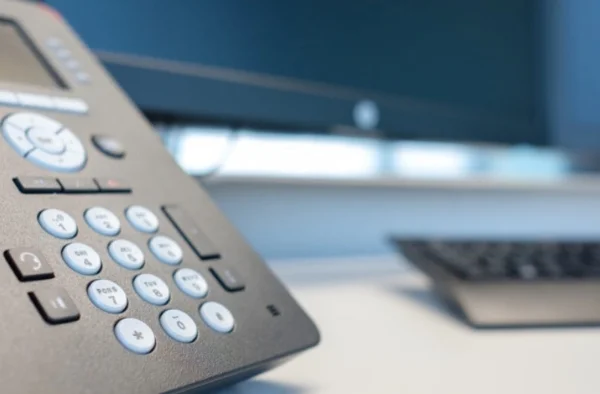Phone Systems 101
Is it time to ugprade to 21st century capabilities?
By Laura Haight
Originally published as The Digital Maven in Upstate Business Journal
Throughout the 20th century, phones were the perfect technology: nearly indestructible, understandable to anyone who could reach the handset, and reliable at doing the one thing we asked them to do.
Things don’t seem that simple anymore. It’s probably one reason that we don’t move to replace clunky and outdated phone systems with anywhere near the frequency of other technologies, despite technology improvements. We stick with what we’ve got because the risk (and just the hassle of it all) seems to outweigh the benefits.
To help shed some light, I turned to Mike Windey, owner of Birdseye Technology in Mauldin. Windey grew up working side-by-side with his dad in his communications company, Action Communications, which became Birdseye Tech just last year. Working with phone systems for decades, gives Windey the experience and perspective to make sense of a complex world where acronyms run amok and its terminology fills an entire 1,035-page dictionary.
Phone systems, it turns out are still pretty hardy, according to Windey, who estimates 10 years useful life. So the first step is to evaluate if you are ready for a new system and, if so, what type of system suits your company. Digital phone systems come in two flavors: Hosted cloud-based systems and on-premise server-based systems.
Which is right for you will depend on primarily on your size.
“For businesses under 20 phones, hosted systems are a no-brainer,” says Windey. Doing a little basic math on the cost of phone lines vs. a per seat price for a hosted system, Windey says most businesses at this level will get a system with “10 times the features” for the same monthly cost, possibly less.
Businesses with a large number of phones but a smaller number of lines - like many in manufacturing - may find the cost/benefit equation tilts more toward an on-premise system.
Factors to consider:
Bandwidth. Most businesses have more than sufficient bandwidth. But if your signal is spotty and you have periods where the signal strength drops, you need to address that. A few companies will run stress tests in advance to be certain your network can support the service and features you’re buying. If in doubt, look for a provider that offers this level of up-front support.
Network. Windey says a 10/100 megabit network is fine, although a gigabit network will be better if you have it. If your network includes hubs, they will need to be replaced with managed switches. One enhancement is power-over-ethernet (POE) switches so the phones can be plugged directly into the network without the need for a power brick, which is “clunky.”
Special needs. Phone system providers like to promote “plug and play” and easy installation. But, Windey says, there are some gotchas. Businesses with overhead paging systems or call boxes on gates or doors will have a special set of challenges that will almost certainly require professional installation. Firewalls also need to be properly configured. Make sure you have someone who knows how to do that properly. Firewall errors made by well-meaning non-tech staff can cause innumerable headaches and lost productivity.
Local support. Windey says the majority of on-premise systems are proprietary and require little - if any - intervention locally. But some are Windows server-based. No business should have a Windows server running without either a IT person on staff or an outsourcing contract with a managed service provider (MSP) that will maintain and support it.
Servers. What is the redundancy and reliability of the company’s servers. If they have an outage, how long will it take for them to switch over to your backup and get you up and running? What is their historical uptime record?
Training. Like all tech projects, success depends on staff adaptation. With phone systems, many features are not readily visible, so training that includes practice sessions is important. New employees also need an introduction to the system as part of onboarding.
Customer Service: Windey says that breakdowns are pretty rare, but when something does happen, it’s an urgent business issue. You want 24X7X365 with a person to talk to on the other end.
Features to look for:
Basic things most everyone will give you include online management through a web portal, voicemail and voicemail-to-email, speed dialing, custom set up on the handset, among others, Windey says.
But depending on your business needs there are some differentiating features to look for as well. Those include: call forwarding to cell phones, bluetooth connections for headsets, equipment replacement (some warrant their phones for the life of your system and will replace for free; not all do), automatic or on-demand call recording, call reporting detail, and a smartphone app that lets you make calls that will use the caller ID of your business (medical practices, Windey notes, “love this feature”).
Some systems also integrate with applications, such as CRM. During a client call, the phone system will automatically enter call info in the CRM system and, if the feature is enabled, attach a recording of the call to the client record. The system Windey sells, ESI Communications, currently integrates with SalesForce and Zoho is on the drawing board.
Top Five:
An online search brings up a ton of providers. From Windey’s perspective, the top five systems worth considering are: ESI, 8X8, Mitel, Packet8, and Vonage.












